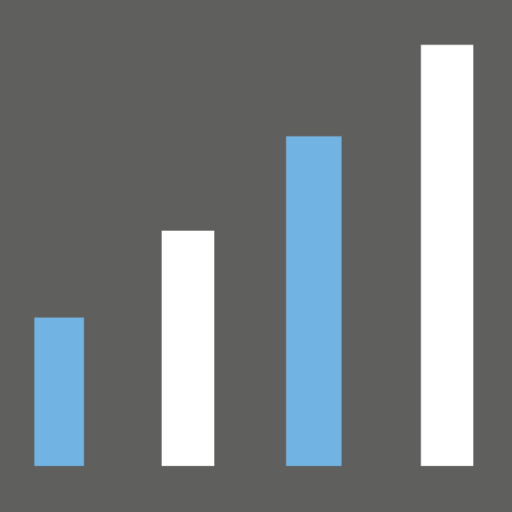Table of Contents
Market Overview
The global Defibrillator Market is a vital segment within the medical device industry, dedicated to the development, manufacturing, and distribution of life-saving devices designed to restore normal heart rhythm in individuals experiencing sudden cardiac arrest (SCA) or life-threatening arrhythmias. These devices deliver controlled electrical shocks to the heart, helping to re-establish a regular heartbeat. The market includes various types of defibrillators, such as Automatic External Defibrillators (AEDs), Implantable Cardioverter Defibrillators (ICDs), Wearable Cardioverter Defibrillators (WCDs), and Advanced Life Support (ALS) defibrillators. The Defibrillator Market is characterized by ongoing technological innovations, increasing public awareness of SCA, and supportive regulatory initiatives.
Market Size and Forecast
The global Defibrillator Market was estimated to be worth US$ 15290 million in 2024 and is forecast to reach a readjusted size of US$ 19140 million by 2031, exhibiting a Compound Annual Growth Rate (CAGR) of 3.3% during the forecast period 2025-2031. This growth is primarily driven by the rising prevalence of cardiovascular diseases, increasing adoption of AEDs in public places, and advancements in defibrillator technology. While the growth rate is moderate, the critical nature of these devices ensures consistent demand. The Defibrillator Market remains a crucial component of healthcare, playing a pivotal role in emergency cardiac care.
Growth Drivers
Several key factors are fueling the growth of the global Defibrillator Market. The increasing incidence of cardiovascular diseases, including heart attacks and arrhythmias, directly correlates with a higher demand for defibrillators. Growing awareness among the public and healthcare providers about the importance of early defibrillation in SCA cases is driving the adoption of AEDs in public and private settings. Technological advancements, such as the development of more compact, user-friendly, and efficient defibrillators, are also contributing to market growth. Furthermore, supportive government regulations and initiatives promoting the availability of AEDs in public places are positively impacting the market.
| Growth Driver | Description | Impact |
|---|---|---|
| Cardiovascular Disease Prevalence | Rising incidence of heart-related conditions. | Increased demand for defibrillators. |
| Public Awareness | Growing understanding of SCA and early defibrillation. | Wider adoption of AEDs. |
| Technological Advancements | Development of user-friendly and efficient defibrillators. | Improved device usability and effectiveness. |
Market Trends
Emerging trends in the Defibrillator Market include the integration of advanced monitoring and communication technologies, the development of more personalized defibrillation therapies, and the increasing focus on remote patient monitoring. Modern defibrillators are being equipped with capabilities to transmit patient data to healthcare providers in real-time, enabling prompt medical intervention. Personalized defibrillation therapies, tailored to individual patient needs, are gaining traction. The integration of wearable defibrillators with remote monitoring systems allows for continuous cardiac surveillance and timely response to life-threatening events. These trends highlight the industry’s commitment to improving patient outcomes through innovation.
Opportunities in the Market
The Defibrillator Market offers several promising opportunities for manufacturers and healthcare providers. A significant opportunity lies in expanding the availability of AEDs in underserved areas, particularly in developing countries, where access to emergency cardiac care is limited. The development of more cost-effective defibrillators can further improve affordability and accessibility. Another opportunity involves enhancing training programs for AED use to empower laypersons to respond effectively to SCA events. The integration of telemedicine solutions with defibrillators also presents a potential avenue for growth, enabling remote monitoring and guidance during emergencies.
Regional Analysis
North America is the largest market for defibrillators, accounting for approximately 50% of the global market share. This dominance is attributed to well-established healthcare infrastructure, high awareness of SCA, and stringent regulatory standards. Europe follows North America in terms of market size, with a significant focus on innovation and technological advancements. The Asia-Pacific region is expected to witness the fastest growth, driven by increasing healthcare spending, rising awareness of cardiac care, and expanding access to healthcare services in countries like China and India. South America and the Middle East & Africa represent emerging markets with considerable growth potential.
| Region | Key Factors | Market Share (%) |
|---|---|---|
| North America | Established healthcare, high SCA awareness | 50% |
| Europe | Focus on innovation, advanced healthcare | 45% |
| Asia-Pacific | Increasing healthcare spending, expanding access | Growing |
Segmentation by Type
The Defibrillator Market is segmented by type into Automatic External Defibrillators (AEDs), Implantable Cardioverter Defibrillators (ICDs), Wearable Cardioverter Defibrillators (WCDs), and Advanced Life Support (ALS) defibrillators. AEDs represent the largest segment, owing to their widespread use in public places and ease of operation. ICDs are surgically implanted devices designed to continuously monitor heart rhythm and deliver electrical shocks when needed. WCDs offer a non-invasive option for patients at risk of SCA. ALS defibrillators are primarily used in hospitals and emergency medical services, providing advanced monitoring and defibrillation capabilities.
Segmentation by Application
Based on application, the Defibrillator Market is segmented into hospitals, public access settings, home healthcare, and others. Hospitals constitute the largest application segment, as they are equipped with a wide range of defibrillators for emergency cardiac care. Public access settings, such as schools, airports, and shopping malls, are increasingly adopting AEDs to improve survival rates following SCA events. Home healthcare is a growing segment, driven by the rising adoption of WCDs and remote patient monitoring solutions. The “others” segment includes applications in ambulances, sports facilities, and corporate offices.
Competitive Landscape
The global Defibrillator Market is characterized by the presence of several major players, including Medtronic, Abbott, Boston Scientific, Biotronik, Physio-Control, Nihon Kohden Corporation, Zoll Medical, Cardiac Science, Philips Healthcare, PRIMEDIC, Schiller, Sorin Group, HeartSine Technologies, and Defibtech. These companies are focusing on product innovation, strategic partnerships, and geographical expansion to strengthen their market positions. The top five manufacturers collectively hold a market share of over 30%, indicating a relatively consolidated market. Key competitive strategies include offering a diverse product portfolio, investing in research and development, and providing comprehensive customer support services.
| Company | Key Strategies | Market Focus |
|---|---|---|
| Medtronic | Innovation, strategic acquisitions | ICDs, advanced cardiac therapies |
| Boston Scientific | Technological advancements, clinical trials | ICDs, cardiac rhythm management |
| Zoll Medical | AEDs, public access programs | Emergency resuscitation, acute critical care |
Demand Forecast
The demand for defibrillators is projected to remain steady over the forecast period, driven by the factors mentioned above. The increasing prevalence of cardiovascular diseases and the growing emphasis on early defibrillation are expected to sustain market growth. The development of more advanced and user-friendly defibrillators will further drive adoption across various application settings. Overall, the demand forecast for the global Defibrillator Market indicates a stable and resilient market with significant opportunities for innovation and expansion.
Challenges and Restraints
Despite the positive outlook, the Defibrillator Market faces certain challenges and restraints. One major challenge is the high cost of advanced defibrillators, which can limit accessibility in certain regions and healthcare settings. Another challenge is the regulatory complexities and stringent approval processes for medical devices. Additionally, the market faces competition from alternative therapies for cardiac rhythm management. Addressing these challenges will be crucial for ensuring equitable access to life-saving defibrillator technology and sustained market growth.
Future Outlook
The future of the Defibrillator Market appears stable and promising, with continued innovation and increasing awareness driving market evolution. As technology advances and the focus on early intervention grows, defibrillators will remain a critical tool in emergency cardiac care. Manufacturers who prioritize product innovation, affordability, and accessibility will be well-positioned to capitalize on the opportunities within this essential medical device market.
| Aspect | Future Trend | Impact on Market |
|---|---|---|
| Technology | Integration of AI and Machine Learning | Improved device performance, personalized therapies |
| Accessibility | Increased AED deployment in public places | Higher survival rates from SCA |
| Connectivity | Enhanced remote monitoring capabilities | Timely intervention, improved patient management |

